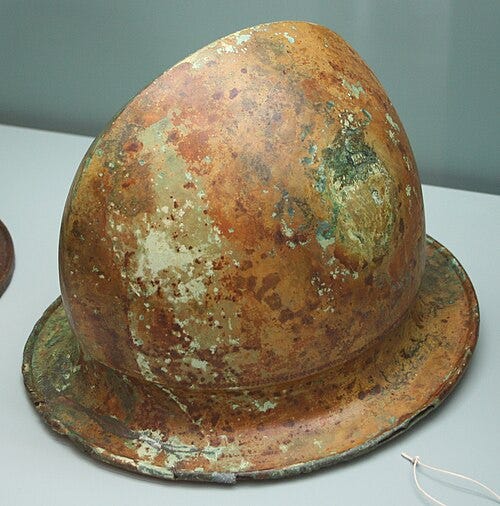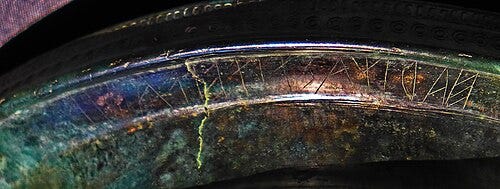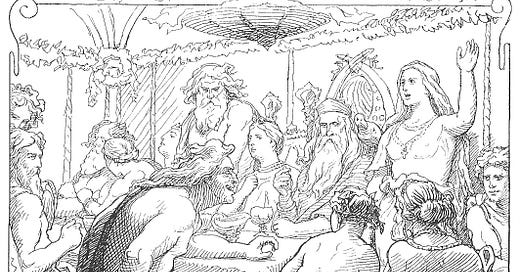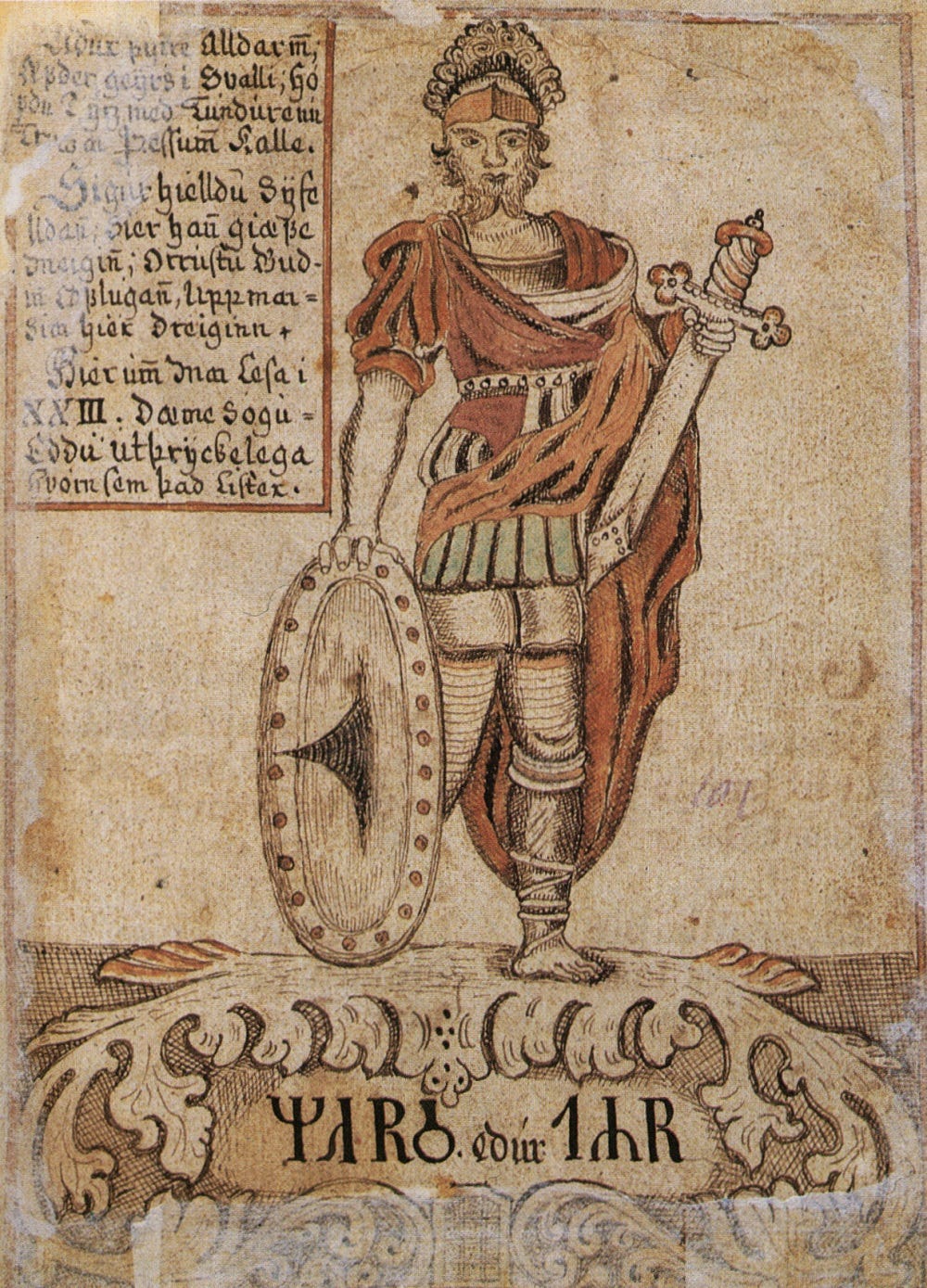The name varied by era and region, but he was most popularly known as Tiwaz to the Proto Germanic people, and later Tiw / Tyr to the Norse / Germanic tribes. It was even written by the Romans, that Tyr was the God they knew as Mars. His name was known from England and Ireland in the east, to areas of modern Ukraine and Russia in the west. France, Spain, Italy, the Netherlands, and Sweden all knew who Tyr was. For nothing more than simplicity, I will refer to the God moving forward as Tyr, if I use the word Tiwaz it will refer only to the Rune. That being said, let's get into the nitty gritty history.
The oldest evidence and attestation of Tyr lies in Etruscan Runes carved in a helmet. This was found with 26 other Etruscan helmets, at a sight in what is now modern Slovenia. The heavily controversial inscription was finally fully translated through Rhaetic in 2001. The runes translate to “Harigast the priest from Teiwaz” and dates back to right around 400 BC.


The runic scripts used by the Etruscans and other groups known as Raetic, Rhaetic, or Rhaetian, all used a set of runes that strongly resembled the Futhark and Futhorc. The reason that this is so relevant to Tyr, is because of the tangent link between Tyr and Mars, and the one between the Etruscan and Germanic peoples. The following images are examples of the very link between Tyr and Mars that blur that line.
Above we see an image from an 18th century manuscript equating Tyr with Mars, a similar reference was made by Tacitus in Germania.
“Among the gods Mercury is the one they principally worship. They regard it as a religious duty to sacrifice to him, on fixed days, human as well as other sacrificial victims. Hercules and Mars they appease by animal offerings of the permitted kind. Part of the Suebi sacrifice to Isis as well.”
We can even see these links between the two gods in the very Symbol used by the Ancient Romans for “Mars,” and in much more modern times the symbol for “male.” It is a combination of symbols depiction the Tiwaz rune or spear, and a shield.
The fact that Tyr has a history that stretches so far back into times where records were kept orally, and traditional stories told in the forms of songs and poems, there is no telling how far back in our history that Tyr actually goes.
The Tiwaz Rune
A symbol so very ancient that it's origins are literally unknown.
From the Elder Futhark and Younger Futhark, to the English Futhorc, and Etrsucan Raetic script, the Tiwaz rune remained the same. The meaning of this rune has similarly held its place representing victory in conflict, for nearly as long as it has been used. In modern times we often forget that well before these runes were ascribed phonetic sounds, and used to spell and record words, they were used individually to convey meaning.
The “Triple Tiwaz” rune was used by itself to summon or gain favor from Tyr. This was primarily done on blades, and was a charm for victory in battle. This is created by stacking 2 - 3 Tiwaz Runes, as can be seen in the image below.
Each rune has a symbolic meaning and some of the others much like Tiwaz also represent a God as well. For instance Thurisaz represents Thor, but it also represents a Thorn, and Giant, while in divination it has the meaning of strength and the power to overcome. These symbols were used by Celtic Druids, Norse Gothi and Vitki, and the people with priest and shaman roles in Tribal communities going as far back as recorded history. They are a part of us.
Thank you all for reading, you sharing, commenting, and criticizing these articles is the greatest payment of gratitude that can be offered. For that we are eternally grateful.
Keep your Ancestral traditions alive. 🤘










It was about his name being used for Tuesday, and a bit of the history on him.
But fair criticism.
What were his feats?
What are his stories?
This article seems to be missing a main middle.